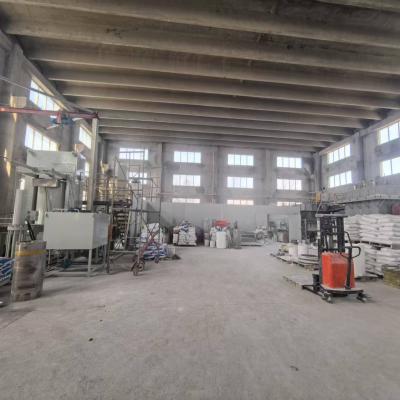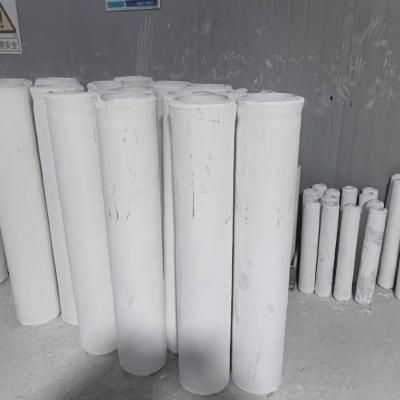
Advanced substance possess extraordinary chemical essences, transforming them optimal for a comprehensive array of implementations. Originating from flight and cars to technological devices, these components are incessantly advancing to meet the expectations of a leading-edge environment.
- Their durability and endurance to drastic atmospheres make them necessary for premium units.
- Additionally, technical ceramics offer pros in terms of durability, contributing the development of innovative apparatuses.
Constructing Composites: Fashioned for Enhanced Output
Fabricated ceramics lead in severe functions due to their extraordinary features. Made from carefully picked raw substances and subjected to rigorous processing methods, these cutting-edge ceramics showcase outstanding robustness, abrasion resistance, and endurance to extreme temperatures, corrosion, and abrasion. From aerospace pieces to carving tools, industrial ceramics provide remarkable effectiveness across broad specialties. Their pliability allows withstanding extreme conditions, confirming durability and steadfastness. As innovation progresses, the call for premium materials grows, cementing the crucial stance of industrial ceramics in shaping a thriving era.
Pioneering Ceramics: Transcending Substrate Frontiers
Elements, highlighting remarkable fortitude and persistence, are undergoing a innovation. Cutting-edge ceramics, developed with refined control over their formulation and internal architecture, surpassing the thresholds of the sum of imaginable. These forms manifest a comprehensive assortment of characteristics, qualifying them tailored for demanding domains such as spacecraft, clinical field, and resources. From weighted minimally parts that bear extreme heat to body-friendly implants that merge effortlessly with the human body, advanced ceramics are transforming our reality.
Strict Ceramic Fabrication: Fulfilling Critical Demands
Specialized ceramic fabrication has grown considerably in recent phases, authorizing the fabrication of intricate and highly usable ceramic modules. These components are vital across a diverse range of sectors, including outer space, health, and gadget domains. Attaining the high requirements for these operations calls for exact fabrication processes that maintain dimensional rightness, surface quality, and material traits. State-of-the-art ceramic fabrication processes leverage multiple methods, including slip casting, injection molding, and additive manufacturing. These techniques allow the formulation of complicated designs and meticulous features with outstanding accuracy. In addition, advances in substance development have led to new ceramic compositions endowed with enhanced qualities. These composites innovate increased endurance, sturdiness, and tolerance to severe thermal conditions, supporting their use in exacting sectors.
The opportunities for fine ceramic fabrication are considerable. As experiments and innovation advance, we can reckon on even more refined tactics and ceramics that will additionally expand the margins of what is feasible in this domain.
Top-Performing Ceramic Products for Demanding Environments
Innovative ceramic substances feature extraordinary sturdiness and resistance against challenging conditions, making them suited for unrelenting assignments in aerospace sectors. These high-tech ceramics can tolerate elevated thermal loads, repel oxidation, and keep their structural integrity under extreme dynamic pressings. Their distinctive nanostructural specifications enable stable activity in tough settings, including thermal devices, aero engines, and atomic reactors.
- Engineered ceramic blends
- Thermal endurance
- Lightweight design
Ceramic Hybrids: Uniting Power and Effectiveness
Ceramic composites furnish a significant mix of mechanical fortitude and distinct particular characteristics. Through the blending of ceramic particles within a scaffold, these structures achieve outstanding efficiency. This synthesis results in heightened tolerance against high temperature stress, wearing, and chemical degradation, rendering them appropriate for precise operations in aviation, motoring, and fuel branches. Furthermore, ceramic composites can be designed to possess distinct properties like electrical conductivity or biocompatibility, enhancing their usage across diverse fields.
Atomic Control in Progressive Ceramics
Obtaining specified attributes in state-of-the-art ceramics consistently requires meticulous regulation over their fine formation. Numerous fabrication elements, including sintering thermal exposure, extent, and atmosphere, alongside the inclusion of dopants or auxiliary phases, substantially alter the distribution of clusters, absorption, and other microstructural specifications. Detailed customization of these settings allows for the amplification of toughness, break resistance, and temperature conductivity. By way of illustration, upsizing the sintering thermal exposure can foster grain inflation, thus increasing thickness and improving mechanical sturdiness. Conversely, controlling the firing atmosphere may influence the oxidation state of the ceramic, thereby influencing its electrical conductivity or magnetic specs. Perceiving these relationships between microstructure and properties is fundamental for developing advanced ceramics with bespoke capabilities suitable for extensive deployments.
Wear-Resistant Ceramics: Fortifying Robustness
Within taxing commercial sectors, where items are subjected to constant grinding and degradation, products with notable durability are urgently necessary. Wear-resistant ceramics have materialized as a leading remedy, granting unparalleled durability and effectiveness in many covers such as production, mining, and aerospace. These specialized ceramics possess a exclusive internal formation that increases their potential to defy scraping. By applying the essential strength and density of ceramic materials, engineers can craft sturdy parts capable of enduring the most severe operating environments.
Health-Safe Compounds: Applications in Medicine
Living tissue-compatible ceramics have remodeled the biomedical market, furnishing an array of helpful features for extensive roles. These compounds are non-reactive within the tissue, minimizing reactionary responses and facilitating healing. A prime mission for biocompatible ceramics is in skeletal implants, where their durability sustains long-lasting security to damaged biological tissues.
Moreover, they are adopted in dentistry, providing a tough and attractive solution for dentures. Ceramics also hold a key duty in medication delivery, empowering the localized supply of medication to specific points within the flesh.
- Additionally, biocompatible ceramics are frequently being analyzed for regenerative medicine, serving as a structure for replacement.
- Because of this, the outlook of biocompatible ceramics in clinical practice looks hopeful, with continual explorations expanding their roles.
High-Tech Ceramic Sensors: Boosting High-Precision Determinations
Ceramic sensors have emerged as essential components across a wide array of industries. These instruments capitalize on the peculiar essentials of ceramic coatings to deliver highly trustworthy quantifications. Their durability alumina ceramic in {demanding|harsh| 